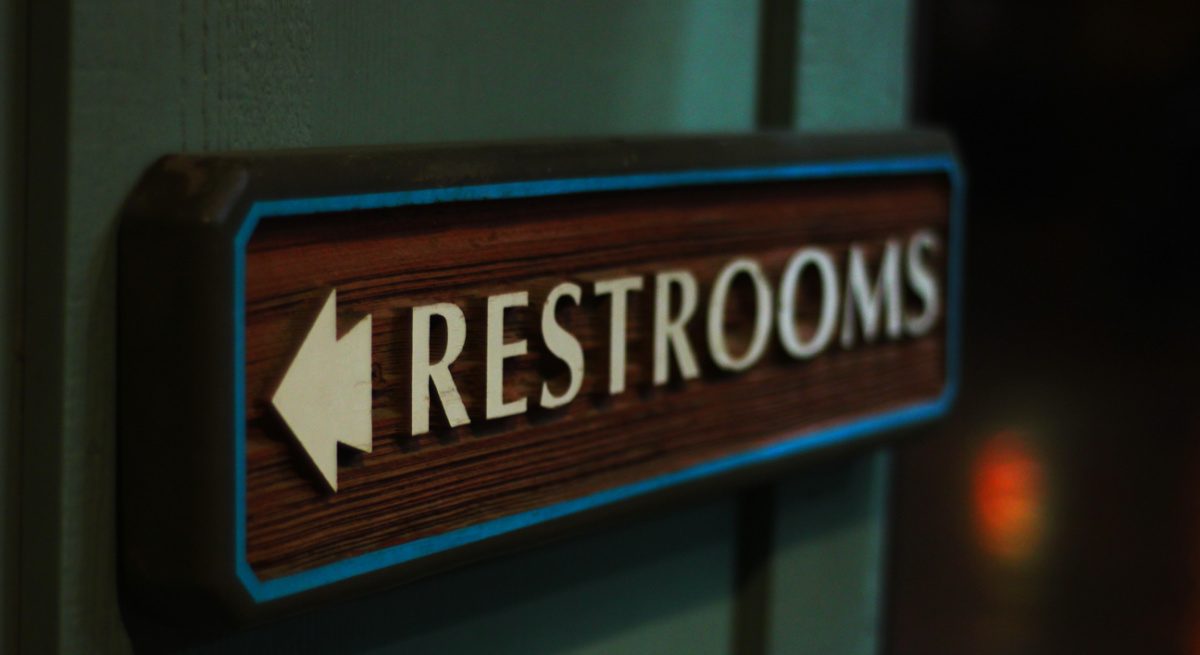Supporting Guests and the Environment with Sustainable Restrooms
4 Min Read By Fabio Vitali
Daily travel numbers are nearly back to what they were in 2019, according to the Transportation Security Administration (TSA). With many businesses experiencing an increase in the number of guests, this equates to more foot traffic in public restrooms. In the wake of the pandemic, these spaces need to look their best, as clean restrooms can enhance customer satisfaction and encourage repeat business. But cleanliness is not the only thing that facility managers must prioritize. Now is the time to also consider sustainability and how to minimize the environmental impact of commercial restrooms.
Best Practices for Sustainable Restrooms
To responsibly maintain restrooms, the first step is to understand the difference between eco-friendly and sustainable. In general, both words often get tossed around when it comes to paper and plastic products. The term “eco-friendly” simply refers to products that don’t necessarily harm the planet. On the other hand, those labeled “sustainable” are held to a much higher standard, and they must be made from renewable sources.
Consider a variety of features and solutions that your facility can invest in to reduce its carbon footprint and provide visitors with a clean and green restroom, including:
- Look for restroom products made from renewable sources and/or from recycled materials. Utilizing recycled plastics, rather than producing new plastic materials, significantly minimizes greenhouse gas emissions. Today, there are restroom products made from plastic waste that are also incredibly durable, like paper towel and toilet paper dispensers. Whether a product reuses plastics that have been diverted from landfills or those that have been recovered from the environment, like those polluting the ocean, recycling helps reduce the impact that plastics have on our planet.
- Minimize your facility’s output of plastic waste. In one year alone, the number of containers and packaging in landfills accumulated to over 82 million tons. Since many restroom products are shipped in packaging that isn’t properly recycled, eliminate the hassle and the added landfill waste by opting for products with sustainable packaging. This includes recycled paper, cardboard and biodegradable and plant-based materials that are renewable.
- Source products with sustainability certifications. Nearly 80 percent of Millennials today are actively making more sustainable choices. This includes carefully selecting where they shop, eat, work out and which products they interact with. To meet the growing demand of this generation and sustainability-minded Gen Z, businesses should incorporate certified products. Use of certified solutions, like Green Seal, can save millions of metric tons of CO2 emissions, hundreds of thousands of pounds of volatile organic compound (VOC) pollution and half a billion pounds of organochloride pollution.
- Automate the hand drying process. The right restroom features can positively influence customer retention and the triple bottom line. In fact, 7 in 10 Americans are more likely to return to a business that has automatic soap and paper product dispensers. Some automated dispensers are specially designed to help facilities save costs and reduce waste by curbing the amount of paper restroom guests use. They accomplish this by allowing facility managers to customize the length of the towels. Repeat business coupled with waste reduction supports a business’ bottom line.
- Limit water consumption. There are a variety of new toilets on the market that help minimize water waste during the flushing process. Options include dual-flush toilets, WaterSense toilets that meet Environmental Protection Agency (EPA) certifications and low-flow toilets. In fact, the EPA found replacing all old toilets with a more environmentally-friendly toilet will save the same amount of water that flows over Niagara Falls in 12 days. Automated faucets can also help reduce water consumption, especially in high-traffic facilities.
- Reassess cleaning processes. During the pandemic, many facilities ramped up the frequency of cleaning and turned to more caustic chemicals. This can have a negative impact on indoor air quality and the well-being of building occupants. Therefore, ensure your facility has proper ventilation and look for cleaning chemicals that do not contain volatile organic compounds (VOCs).
Additionally, half of consumers believe facilities should try to minimize reliance on single-use plastics. Opt for restroom cleaning solutions that are mixed with water instead of ready-to-use solutions sold in single-use plastic bottles.
The Larger Impact of Waste
Across the world, paper usage has increased 400 percent in the last four decades. Unfortunately, consumers and businesses in the United States have been the main drivers of this paper waste growth, generating 3.8 million tons of tissue paper and paper towel waste in just one year. The overuse of paper products contributes to rapid deforestation. By the year 2040, it’s expected that the United States will lose roughly 31 million acres of forest.
Not only has deforestation become a major issue, but so has the increased use of plastic pollution in the ocean. Despite 11 million tons of plastic entering the ocean and harming 800 species each year, it’s still expected that plastic production will increase by roughly one-third over the next five years. Given this dire situation, research shows that finding a solution to plastic pollution is a top concern for the public.
To help curtail the impact of deforestation and plastic pollution, facility managers can make small changes that yield substantial environmental results and positively impact their businesses. Establishing relationships with trusted suppliers and manufacturers that source products made from recovered, recycled and renewable materials is key to establishing sustainable restrooms and extending this commitment to an entire facility.
Act Now to Make a Positive Change
The environmental crisis is a massive issue that each person unknowingly contributes to each day, little by little. The overuse of paper products and cleaning solutions in addition to an unwillingness to properly recycle have further aggravated this issue. This is greater than an individual issue, considering commercial facilities are also responsible for the majority of waste generation. Thankfully, facility managers can help drive environmental progress by carefully sourcing sustainable restroom solutions and strategically maintaining their buildings.


